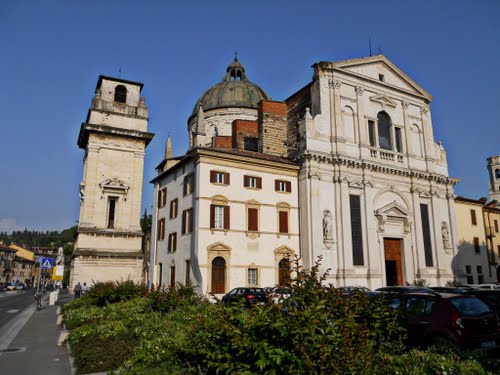Towards 1046, a Benedictine monastery was built on the banks of the Adige River. It was almost totally demolished during the initial decades of the 19th century. Alongside the monastery a Romanesque church was immediately built, of which nothing remains today. As testimony of its presence there remains the bell tower, which dates from the XII century.
In 1442, the monastery was given to the Canonicals of St. Giorgio in alga of Venice, who rebuilt the church. The façade of the Church and the Canonical house, built in 1791, both bear traces of French rifle fire, from a battle that took place in October of 1805, when the French came from Castelvecchio to assault Austrian Verona: a plaque today commemorates this event.
The façade was realised in the 17th century and is in white marble, with two orders of shortened pillars. Underneath they are ionic and on top they are Corinthian; the two lateral niches accommodate the statues of St. George and St. Lawrence Giustiniani.
The rest of the church is in brick. The bell tower was designed by Brugnoli; some think it was designed by Sammicheli or even by Palladio.
The dome demands attention because of its gracefulness, but also because of the masterful way in which it was built. Sammicheli had to work on a pre-existent building on this site.
On the side of the church facing the Adige River, the reconstructed cloister of the old monastery adds a suggestive note to the environment. The interior has a single nave and is simple and grandiose at the same time: finished between 1536 and 1543, it unites majesty and beauty, also because of the art treasures it contains.
Above the large door, an initial painting masterpiece, an exquisite work by Tintoretto, shows the Baptism of Christ. There are four lateral chapels on each side. Underneath the dome, there is the choir with its underlying marble altar, which depicts the miracle of St. Barnaby, by Veronese.
Two large paintings can be seen in the presbytery: one is by Farinati, the Multiplication of bread, and the other is by F. Brusasorzi, Manna in the desert; in the back there is another masterpiece by Veronese, the martyrdom of St. George.
